Welcome to Waingapu, the gateway to the mystical island of Sumba. This is not your typical cruise port; it's an entry point to an ancient culture known for its magnificent megalithic tombs, unique tall-roofed houses, and world-renowned ikat textiles.
Waingapu offers a glimpse into a side of Indonesia that remains largely untouched by mass tourism. It is a favored stop for expedition and luxury lines like Seabourn and Silversea, which bring travelers seeking authentic cultural immersion and breathtaking natural landscapes.
Just a few minutes from the port is the Prailiu Traditional Village, an easily accessible introduction to Sumbanese culture. Here you can see the iconic tall, thatched-roof houses (uma mbatangu), observe daily life, and watch local artisans practice the intricate art of ikat weaving.
A must-see natural wonder is Walakiri Beach, located about 30 minutes from Waingapu. The beach is famous for its unique, silhouette-like mangrove trees that appear to be "dancing" against the sky, creating a magical and highly photogenic scene, especially at sunset.
For a vibrant local experience, visit the Pasar Inpres Matawai, Waingapu's main market. It’s a bustling hub where you can see local produce, spices, and find local handicrafts, including the famous Sumba ikat textiles.
Last updated on July 2, 2025
A popular day trip is to the village of Rende, located about a 1.5-hour drive east of Waingapu. This traditional village is famous for its well-preserved stone-slab megalithic tombs and the royal family's ancestral home, offering a deep dive into Sumba's funerary traditions and social structure.
For natural beauty, many visitors head to Tanggedu Waterfall, often called the "Grand Canyon of East Sumba." Reaching it requires a drive of approximately 2 hours followed by a short trek, so it's a full-day commitment but rewards with stunning tiered cascades and rock formations.
Last updated on July 2, 2025
Cruise ships dock at Pelabuhan Waingapu, the main commercial port for the island of Sumba. The port is conveniently located on the edge of the town center, making the heart of Waingapu easily accessible.
While it is possible to walk into the nearby parts of town, the main attractions are spread across the island and require transportation. The port facility itself is industrial and has minimal passenger amenities. Cruise lines will almost always have shore excursions with transportation waiting pierside.
Last updated on July 2, 2025
The official currency is the Indonesian Rupiah (IDR). While some tour operators pre-booked through the ship may accept US dollars, it is not common practice in local shops, markets, or restaurants.
It is highly recommended to withdraw Rupiah from an ATM in town for any personal purchases. Credit cards have very limited acceptance outside of a few hotels. Plan on using cash for nearly all transactions, including souvenirs and local food.
Last updated on July 2, 2025
Waingapu and the surrounding areas of Sumba are generally safe for tourists, with friendly locals. However, petty crime like theft can occur, so it's wise to keep valuables secure and out of sight. The primary challenge for independent travelers is the lack of tourist infrastructure and language barriers.
For a seamless and safe experience, booking guided tours or shore excursions is highly recommended. This ensures reliable transportation and a knowledgeable guide to help navigate local customs, which are very important when visiting traditional villages. Always ask for permission before taking photos of people or entering homes.
Last updated on July 2, 2025
Waingapu has a tropical climate dominated by a dry season and a wet season. The main cruise season typically falls within the dry season, which runs from approximately May through November. During this time, you can expect hot, sunny days with temperatures ranging from 25°C to 32°C (77°F to 90°F).
The wet season, from December to April, brings heavy rainfall and higher humidity. Regardless of the season, it is always wise to pack lightweight clothing, sunscreen, a wide-brimmed hat, and insect repellent. Comfortable walking shoes are essential for exploring villages and natural sites.
Last updated on July 2, 2025
Public transportation in Waingapu consists mainly of bemos (small shared vans) and ojeks (motorcycle taxis), which may not be practical for most cruise visitors due to language barriers and fixed routes.
There are no standard taxi services or ride-sharing apps like Uber or Grab readily available. The most convenient and reliable way to explore the island's sights is through pre-arranged shore excursions or by hiring a private car with a driver, an Sumba island tour service which can often be arranged in advance through local agents.
Last updated on July 2, 2025
The most sought-after souvenir from Waingapu is the authentic Sumba ikat. These hand-woven textiles are famous worldwide for their intricate designs, natural dyes, and deep cultural significance, often depicting ancestral figures and animals.
You can purchase ikat directly from weavers in villages like Prailiu, which often ensures a fair price for the artisan. Alternatively, the Pasar Inpres Matawai (local market) offers a wide selection, where bargaining is expected. Be aware that authentic, hand-made ikat is a significant purchase, reflecting the weeks or months of labor required to create it.
Last updated on July 2, 2025
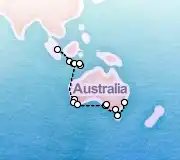
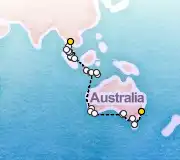
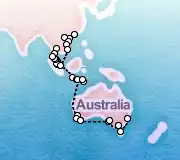
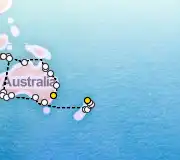
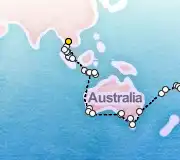




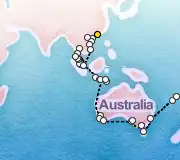
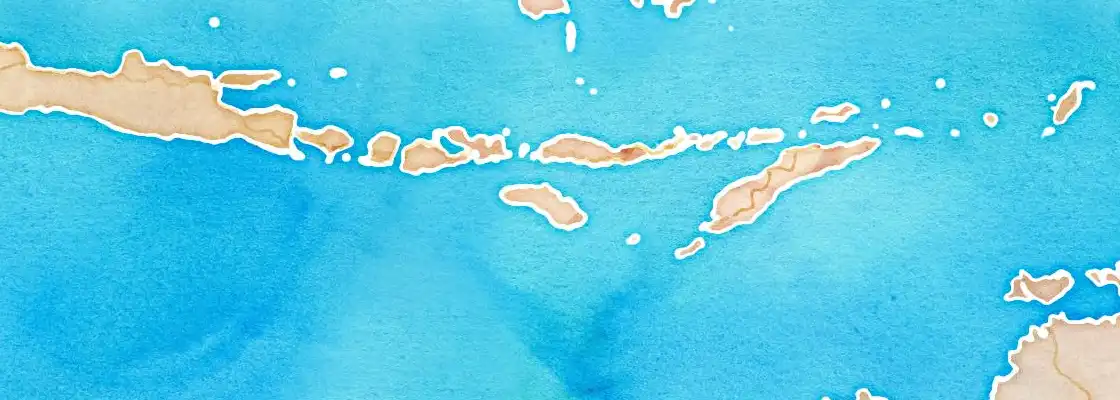
No ships scheduled in port today.
Overall Waingapu is fairly affordable as a port of call. Prices are approximately equal throughout the year. Check out the illustration below for the average cost per day by month.
Want to hear about the best deals and cruise tips every week? Sign up for our free weekly VIP Newsletter, customized exactly to your preferences!